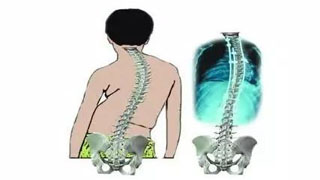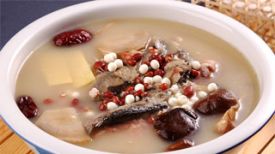
1. What is ankylosing spondylitis?
-Ankylosing spondylitis is a disease caused by dysfunction of the autoimmune system, resulting in persistent inflammation of the body, joint pain and stiffness, inflammation and swelling of joints in the spine and pelvis, and long-term joint fusion.
2. Symptoms of ankylosing spondylitis
-In the early stages of the disease, it is easy to confuse it with other illnesses, and delayed treatment may lead to more serious consequences. The initial symptoms include pain and stiffness in the lower back when waking up in the morning, loss of appetite, weight loss and fever, joint inflammation, heel pain, abnormal fatigue, and tendinitis and plantar radiculitis.
What are the causes of ankylosing spondylitis?
-The cause is unknown, but it is due to immune system dysfunction, where the immune system mistakenly targets tissues and causes joint inflammation. Known genes are the biggest cause, with about 90% of patients having the "HLA-B27" gene in their bodies. Family members have an increased chance of developing the disease, and environmental factors such as bacterial infections can also increase the risk of developing the disease.
4. High risk individuals with ankylosing spondylitis
-It usually occurs in men aged 20 to 40, and the incidence rate of men is 1.5 times higher than that of women. High risk groups include individuals with close relatives in the family, males aged 20 to 40, and those with the HLA-B27 gene.
5. What diseases can ankylosing spondylitis cause?
-If the condition progresses without proper treatment, it can cause severe spinal adhesions, inability to bend, and can also invade different organs of the body, leading to gastrointestinal, skin, and cardiovascular diseases. Common complications include iritis, inflammation of the bone attachment site, and gastrointestinal ulcers.
6. Diagnostic methods for ankylosing spondylitis?
-Suspected illness should seek professional advice from a doctor through physical examination, understanding of medical records, and the following diagnostic tests:
-Blood test: Check the degree of inflammation and whether there is an HLA-B27 gene.
-X-ray and imaging examination: Check the condition of the spine and iliac joints.
-Clinical testing: Doctors will conduct tests for patients to understand the flexibility of the lumbar spine.
7. Treatment methods for ankylosing spondylitis
-There are various treatment methods available:
-Non steroidal anti-inflammatory drugs (NSAIDs): relieve pain and reduce inflammation, but have side effects such as vomiting and gastrointestinal bleeding.
-Rheumatoid drugs (DMARDs): slow down the progression of arthritis and are effective in treating peripheral joint inflammation, but have moderate effects on axial joints and require a longer period of time to take effect.
-Biological agents: containing "Anti TNF", can treat inflammation of the central spine and peripheral joints, requiring injection, high cost, and risk of infection.
-Corticosteroids: quickly reduce inflammation and pain, but long-term use is not recommended as they have many side effects.
-Physical therapy: Relieve joint inflammation, relieve pain and stiffness, including ultrasound therapy, electrotherapy, thermal therapy, and high-energy laser therapy. Maintaining appropriate exercise is also important.
-Surgical treatment: When the joint inflammation is severe and invades the hip joint, and the ability to take care of oneself is lost, consideration can be given to reducing pain and regaining self-care ability.
How to improve ankylosing spondylitis?
-Improvement can be achieved through the following methods:
-Maintain an appropriate weight: Overweight can increase joint pressure.
-Don't smoke: Smoking increases the risk of damaging the spinal joints.
-Moderate exercise: Keep the back joints flexible and act within your capacity.
-Choose a mattress with moderate softness and hardness: ensure sleep quality and provide lumbar support.
9. 3 yoga exercises help soothe ankylosing spondylitis
-Cow style: First kneel, with the wrist and shoulders in a straight line, the thighs and calves at a 90 degree angle, inhale and rotate to relax the shoulder joints, and maintain three breaths.
-Bridge: Lie flat, bend your knees, place your hands on both sides, tighten your stomach, use back pressure to lift your hips, make your body straight, and hold for 3-5 breaths.
-Superman style: Lie down on a yoga mat, place your hands on both sides, inhale and raise your lower body together, lift your head upwards, and take a flying posture. Hold for 3-5 breaths.


